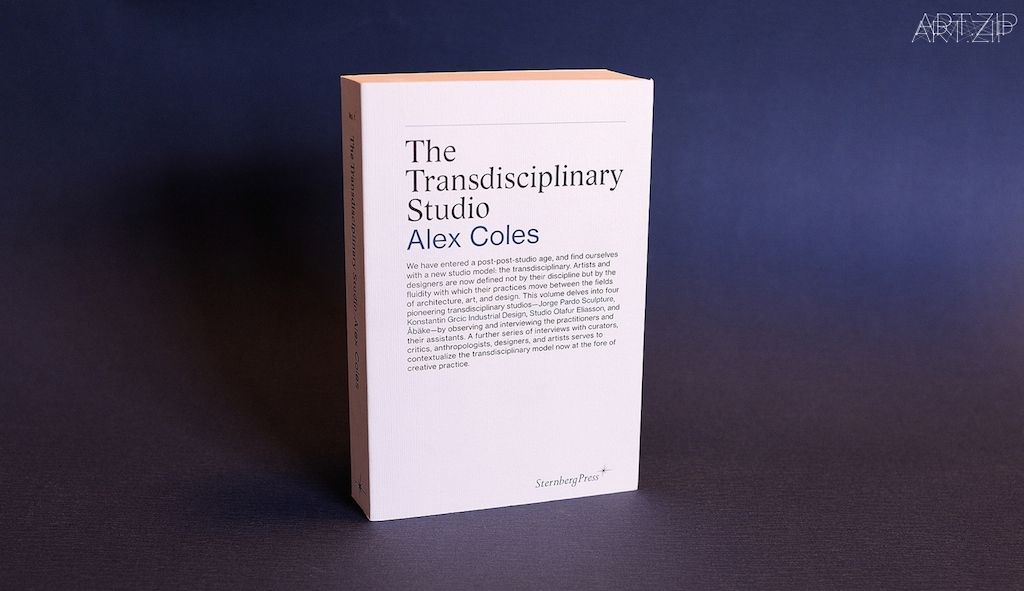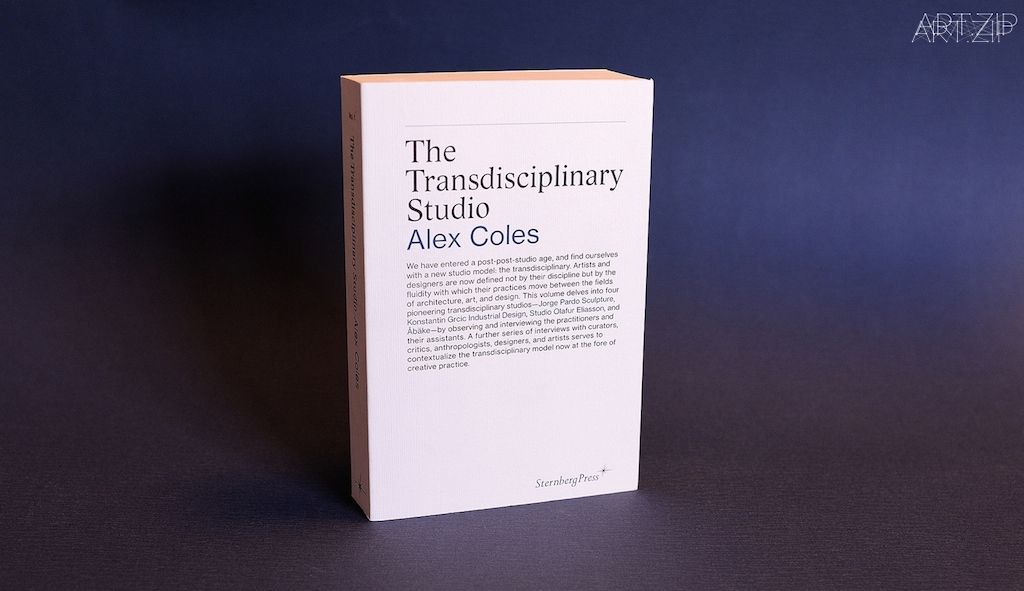
TEXT BY 撰文 x Peng Zuqiang 彭祖強
“We have entered a post-post-studio age.” Announced on the cover Alex Coles book The Transdisciplinary Studio, since ‘Post-studio’ was only a novelty in the 60s in the art world. He identified the term ‘Transdisciplinary Studio’, as a model which deliberately crosses the boundary between disciplines: art, architecture, design, and etc.
So what is ‘Transdisciplinary’ then? It is not multidisciplinary which adopts different disciplines simultaneously; it is also different from Interdisciplinary, which combines different disciplines and attempts to create something new. Transdisciplinary is supposed to transcend the borders of disciplines and therefore practice from a degree level zero. It is “a space that is at once between, across, and beyond all disciplines” which exceeds the forms of multidisciplinary or interdisciplinary practices.
“我們已經邁入了後後工作室時代。” 亞歷克斯·科爾斯的著作《跨領域工作室》的封面上如是寫著,所謂‘後工作室’也僅僅在上世紀六十年代才算作新潮。而科爾斯要談論的是‘跨領域工作室’,一種融合不同學科門類(包括藝術、設計和建築等)的工作室創作方式。
然而什麽才叫‘跨領域’?它既不是‘多重學科性(Multidisciplinary)’那般聯合多門學科的形式,也不像‘學科際(Interdisciplinary)’那樣跨越學科界限並創造出一門新學科。跨領域則是超越學科之間的界限劃分,從新開始的一種創作模式。借用作者的話而言,它是“跨界性整合、交互、並超越所有的學科界限。”
The prime example is without a doubt Studio Olafur Eliasson. Eliasson’s practice is renowned for the intersection of science, architecture and fine art. Through case studies and interviews, the book unfolds more details of the daily running of Eliasson’s studio: It is a structure that accommodates not only artist, but also curators, researchers, teachers, and, chefs. The Studio Olafur Eliasson is closer to an art institution rather than a traditionally defined studio with only artist and the assistants. A quick glimpse on its website reveals each members’ role and positions, its specification is nothing smaller than an art institution.
As its head of research and communications Anna Engberg-Pedersen suggested in the book “What we do is essentially art and what we are borrowing from other fields – words, molecules, whatever – we insert into art practice, transforming them and putting them to sue in a way that expands what we are producing in the field of art.” She did not over-emphasis the role of the studio’s ‘transdisciplinarity.’ Instead, she affirms the necessities of having disciplines.
書中最典型的案例就是奧拉維爾·埃利亞森(Olafur Eliasson)的工作室。埃利亞森的創作一向以跨越科學、建築和藝術而聞名。通過一些案例分析和采訪,詳盡描述了埃利亞森工作室的日常運作模式:這是一個不僅僅屬於藝術家的工作室,與之共事的還包括了策展人、研究員、教師,沒錯,還有廚師。與其說是一個藝術工作室,埃利亞森工作室更像是一個藝術機構。在其網站上粗略一看,便可以了解每位成員的具體職位,這其中的分工層次不亞於一個藝術機構內部分工的詳盡程度。
正如工作室研究和媒體部總監安娜·安格堡-皮德森(Anna Engberg-Pedersen)在采訪中所說:“我們所做的說到底仍是藝術,我們從其他學科借鑒語言和元素,並將他們註入到藝術創作之中,把他們重新轉換整合,從而拓寬我們對藝術創作的定義。“ 她並沒有刻意強調工作室中跨界性的意義,反倒肯定了不同學科獨立的重要性。
In the series of interviews with members from the Studio Olafur Eliasson. Coles did not interview Eliasson himself, but chose to talk to other members in the studio who hold various positions such as the archivist, the curator, the architect. As a result, readers might get a better sense of the supposed Transdisciplinarity of the studio. This can be considered as a deliberate attempt to overcome the prioritization of its central figure over its other members. Cole’s attentiveness to the literary conventions is also indicated in the introduction where he referred to developments in different genres of literature such as art criticism, ethnographical writings, and new Journalism, all relevant references for the writing structure of this book. It is obvious that the publication itself is experimenting with another new way of knowledge production.
在一系列和工作室成員的采訪之中,作者並沒有直接采訪藝術家奧拉維爾·埃利亞森,而是選擇采訪了工作室中其他的成員。這樣一來,讀者更有可能把握其跨領域的性質。這樣的采訪方式,也可以看作是作者在刻意回避對工作室中心角色的過度關注。科爾斯對不同文體的研究也顯露在了撰書過程中,在開篇的介紹裡,他提及了其他文體對此書的影響,這其中包括:藝術評論、民族誌寫作和新新聞學。從結構上來看,此書本身也在探索一種新的寫作和創作模式。
In the second half of the book, Coles interviewed some other well-known figures in the art world, from the artist-turned-designer Vito Acconci, to the curator Maria Lind. There are also some unexpected interviewees, including anthropologist James Clifford. However, the inclusion of Clifford was not only to investigate on the cross-section between art and ethnography, but also to diversify the book’s very own ‘transdisciplinarity.’
在書的下半部分中,科爾斯采訪了藝術圈中的其他一些知名人士:從藝術和設計創作兼容並包的維托·阿肯錫(Vito Acconci),到策展人瑪利亞·林德(Maria Lind),但其中也有一些意料之外的受訪者,比如人類學家詹姆斯·克利弗德(James Cliffod),而采訪克利弗德不僅僅是為了討論藝術和民族誌之間的聯系,同樣也是在拓寬此書自身的‘跨領域性’。
But we also need to be aware that Coles chose these four studios precisely because they practice in such boundary-crossing style – one which might not be relevant for most practitioners. In the area of multidisciplinary, criticisms emerged, questioning whether by foregrounding such terminology, the actual practice is falling behind, and being ‘Transdisciplinary’ for the sake of it. Although such trend reacted to the rigid categorization of modern disciplines, many practitioners in fine art still prefer not to call themselves transdisciplinary artist. This does not merely mean they focus on only one specific genre or medium, but the fact that the word disciplinary is easier said than done. This might also lead the readers to wonder whether the transdisciplinary approach necessarily produce better art practice?
但讀者同時也應注意到,科爾斯選擇了這幾個工作室,正是因為他們的創作屬於或類似於一種跨界的形式──但這並不代表這就是當下最普遍流行的模式。在類似於跨界創作領域中,往往會出現類似如下的批評:“每當口頭上談及‘跨界’時,作品和創作本身是否名副其實?還是為了跨界而跨界呢?”儘管這樣的跨界模式是對現代學科分類日趨僵化的一種反應,但許多的創作者仍不會稱自己為跨界藝術家。這並不是說這些藝術家僅僅專注於一種風格或媒介之中,而是說所謂的‘跨領域性’往往說起來比做起來容易。這樣一來,讀者似乎也可以繼續追問:“是否‘跨領域’的創作方式就會帶來更好的藝術創作呢?”
Few of the educators interviewed in this volume, for instance Ronald Jones, was an advocate on the further transformation of different disciplines in art and design. As Jones argued “…but we must first overcome the way we have been trained at university practising out of very narrow, discipline-bound methods. We need to think in terms of systems and themes, not disciplines.” True, more so in the other side of the Atlantic, courses and degrees adopt prefixes such as inter/trans/cross. The students are encouraged to take inspirations from all different fields of knowledge. However, already in the fine art departments, a clear distinction between fine art and design are drawn to retain their very own radicality. This sometimes biased hierarchy between art and design reject their integration, so that the disciplines retains their own methodology in knowledge production. Or maybe it is not fair to judge and compare such a volume solely in the context of fine art, as that might obey the premise of the project which is about crossing boundaries.
書中所采訪到的幾位教育人士,包括羅納德·瓊斯(Ronald Jones),都是對藝術和設計領域邊界進一步演變的支持者。瓊斯說道 “我們應該克服在大學之中所接受的比較狹窄而邊界清晰的教育模式…我們應該借助系統和主題而不是邊界來思考。” 的確如此,在大西洋的另一邊,課程和學科設置或許更為迎合‘跨學科/多學科/學科際’等模式。教育模式也支持鼓勵學生從不同的學科和知識領域吸取營養。但是,在純藝術系別中,對藝術和設計的一個清晰的劃分似乎已經定型。這種時常在藝術和設計之間略有不公的等級差異,似乎也抗拒著他們進一步的融合。也正因為如此,或許僅僅從藝術的角度出發來評論這樣一本強調‘跨領域’的書,本身也是不全面的。
Therefore it is worth paying attention to the rationale behind such terminology, indicated by Coles’s own comment in the book: “My sense is that in an age that is considered to be of the “post-studio” – theoretically, at least, no model has replaced that one – there has been a total reinvigoration of the studio but no theory has been written to account for it.” This underlines Coles’s ambition of theorising a new model in the structure of studio practice. Nevertheless, are these examples representative of the entire structure of the art practices? Or if these studios themselves can really be generalised as ‘Transdisciplinary.”
或許我們可以更進一步地審視作者提出這一觀念背後的邏輯,正如科爾斯所說:“在我看來,這個‘後工作室’時代──理論上而言,還沒有被一個新的模式來接替取代──然而當代對工作室的定義早已被更新,但還沒有任何理論來反應這樣的轉變。” 從這句話中我們不難看出科爾斯想要重新定義當代工作室定義的想法。儘管如此,他書中所采訪和涉及的這些案例,是否具有足夠的代表性呢?而這些工作室是否又真的都能被‘跨學科’這樣一個定義所概括?
The book offered a detailed articulation of what is considered as ‘Transdisciplinary Studio’ in the contemporary visual practices. However, instead of providing a concluding rhetoric of such term, the author assembled a rich collection of interviews with practitioners working in fields related to the ‘transdisciplinary’, and their words, no matter how transdisciplinary they are, provide entry points for the readers to consider if this very term applies.
此書提供了一個在當代視覺文化範疇內,什麽是‘跨領域工作室’的詳盡介紹。與此同時,作者並沒有試圖去定義這樣一個模式,而是為讀者呈現了一個對諸多‘跨界性’創作者采訪的集合。而他們的感受,無論跨界與否,都給讀者們從不同切入點來考慮這個詞匯,‘跨領域’是否恰當地描述了其現狀而提供了參考。
Quotes:
“Transdisciplinary is a space that is at once between, across, and beyond all disciplines.”
“My sense is that in an age that is considered to be of the “post-studio” – theoretically, at least, no model has replaced that one – there has been a total reinvigoration of the studio but no theory has been written to account for it.”


